Travelogue: Tianjin's Zhongshuge Library
A salute to Tianjin's maritime character in the Italian Quarter.
From 1901 to 1947, about 100 acres of Tianjin were controlled — owned —by the Kingdom of Italy. Now, 125 years later, the buildings and villas that were home to a few thousand Italians and other foreigners is known as the Italian Style Area. Shops, open markets, bars and restaurants make a nice walking street for locals and visitors.
But enough history lessons. We came to be surrounded by books.
First, an apology. This is not a library. For the fans I have disappointed, here is an awesome library.
Second, bookstores are alive! Reports of the death of bookstores have been greatly exaggerated. Efforts by Amazon not withstanding… yes I’m a user as well as a critic… the convenience of browsing, downloading, and even next day delivery cannot, and will never, replace the profoundly yawning need we have to be surrounded on all sides by ideas bound in paper.
Zhongshuge is a chain of bookstores found in a variety of cities across China. Big cities or small, North or South, East or West, there is no pattern to where one pops up, as there is no anticipating the vision of the design. Each is as different as the community the design takes its inspiration from. We have written about the Zhongshuge in Dujiangyan, influenced by the bamboo and river history of Sichuan.
This building was resurfaced outside and inside to make the seamless aesthetic X-Living, the design firm, was going for. Red brick and steel rise to meet you, the stacked effect created by the gaps introduced into the originally flat brickwork.
The layered and undulating waves of the atrium buoy and carry you toward the spiral stairs that ascend into the upper reaches. Meant to illicit thoughts of waves, to pay respect to Tianjin’s history as a port and maritime power, the immediate effect is stunning in person. The stacked layers flow upwards, the gaps flowing out like the space is being pulled apart to give us room to walk between, towards a temporary ascending gateway to a destination.
The space feels like the bones of the building are on display. Usually hidden from view, brick and steel are structural. We are being shown the shape of the buildings reality. It feels momentarily suspended in time, as if looking away and coming back we should expect changes. Four hundred thousand bricks, hundreds of shapes made specifically for this project, the complexity of the design and the visualizing tools used to get it all perfect must be powerful.
Is there not something unsettling about X-Living’s interiors? I don’t know if it is the darkly sinister colour palette, the dull texture of the materials, or the repetitive nature of the shapes and perspective, something inspires a curious discomfort. The forces that shaped this expanse we found ourselves in could collapse as simply as opening.
I read too much Lovecraft.
Like a distorted glimpse at an adjacent dimension, the boundary of the reading area bleeds one into the other. Don’t gape for too long at the figures resting above, they may resolve into shapes you would rather not see and when you look away… they could have come with you.
Nah, its just a funhouse effect, an expensive but harmless gimmick to sell knickknacks and books. Books of dust, traces of the thoughts of people just like us, from another time but the same place, yadda, yadda. Sorry, there I go again.
Thank you for indulging my diversion in into this discrete angle of modern China. We came through unscathed. And see? Look around. Nothing has changed.




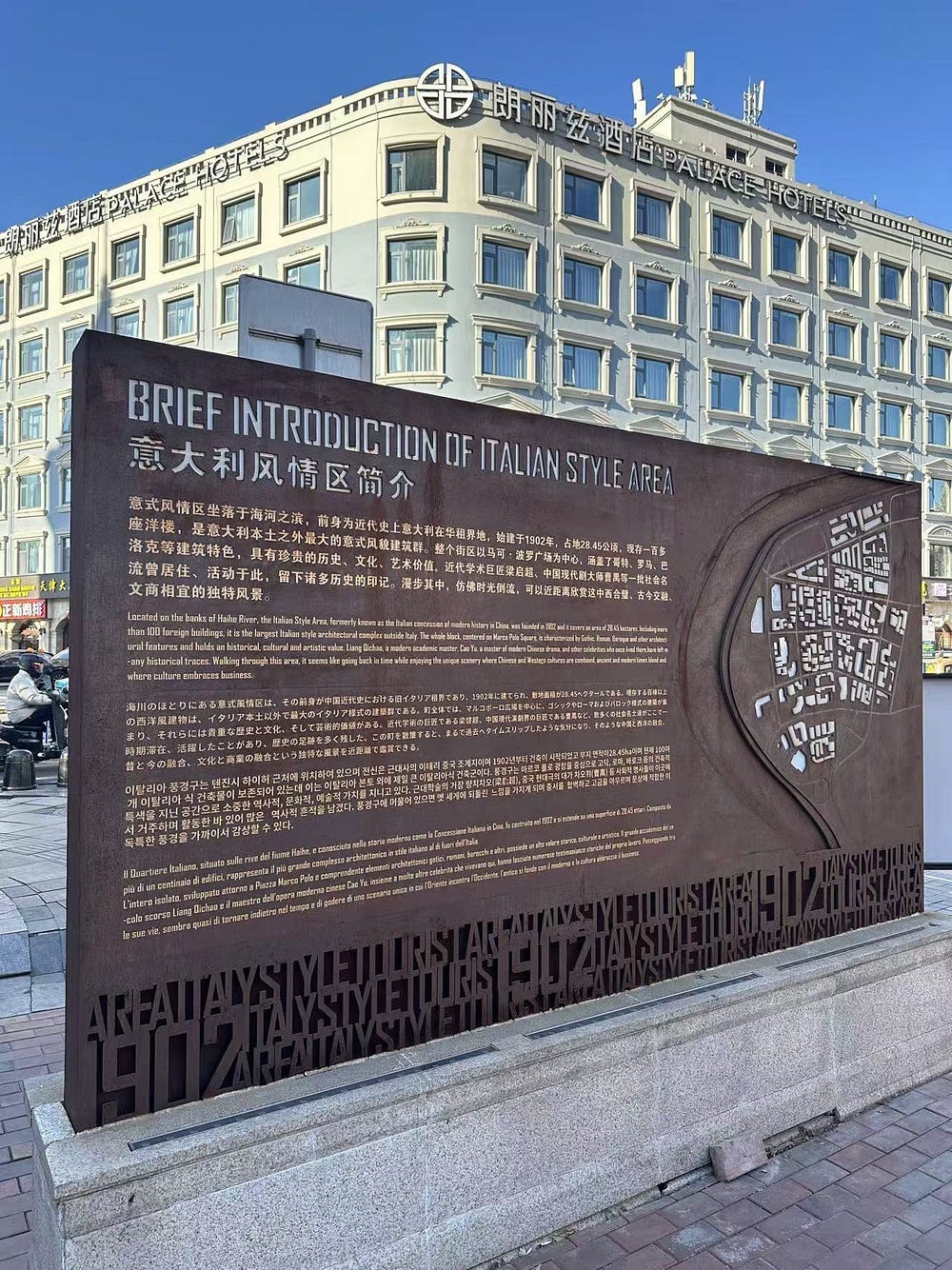


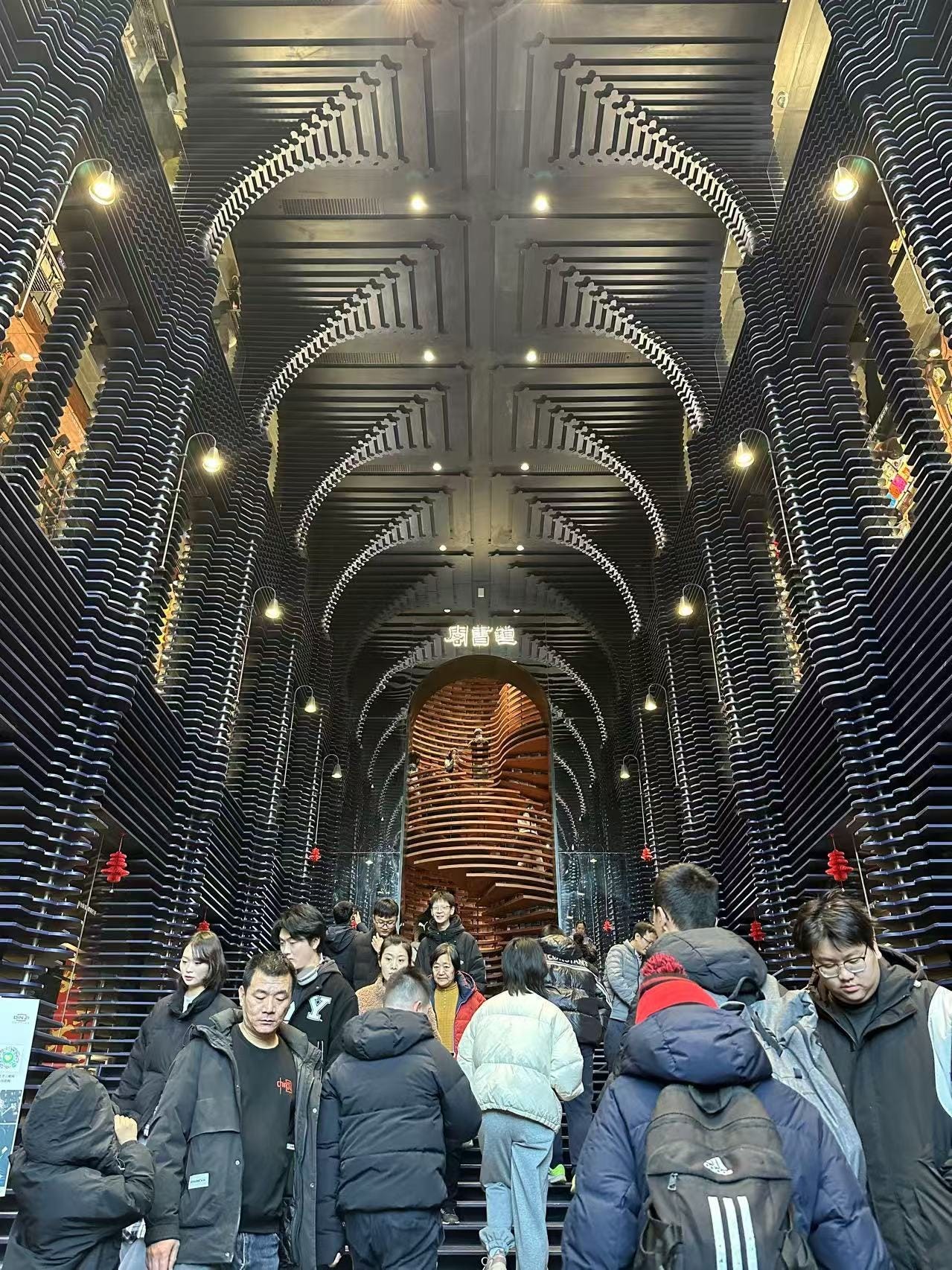
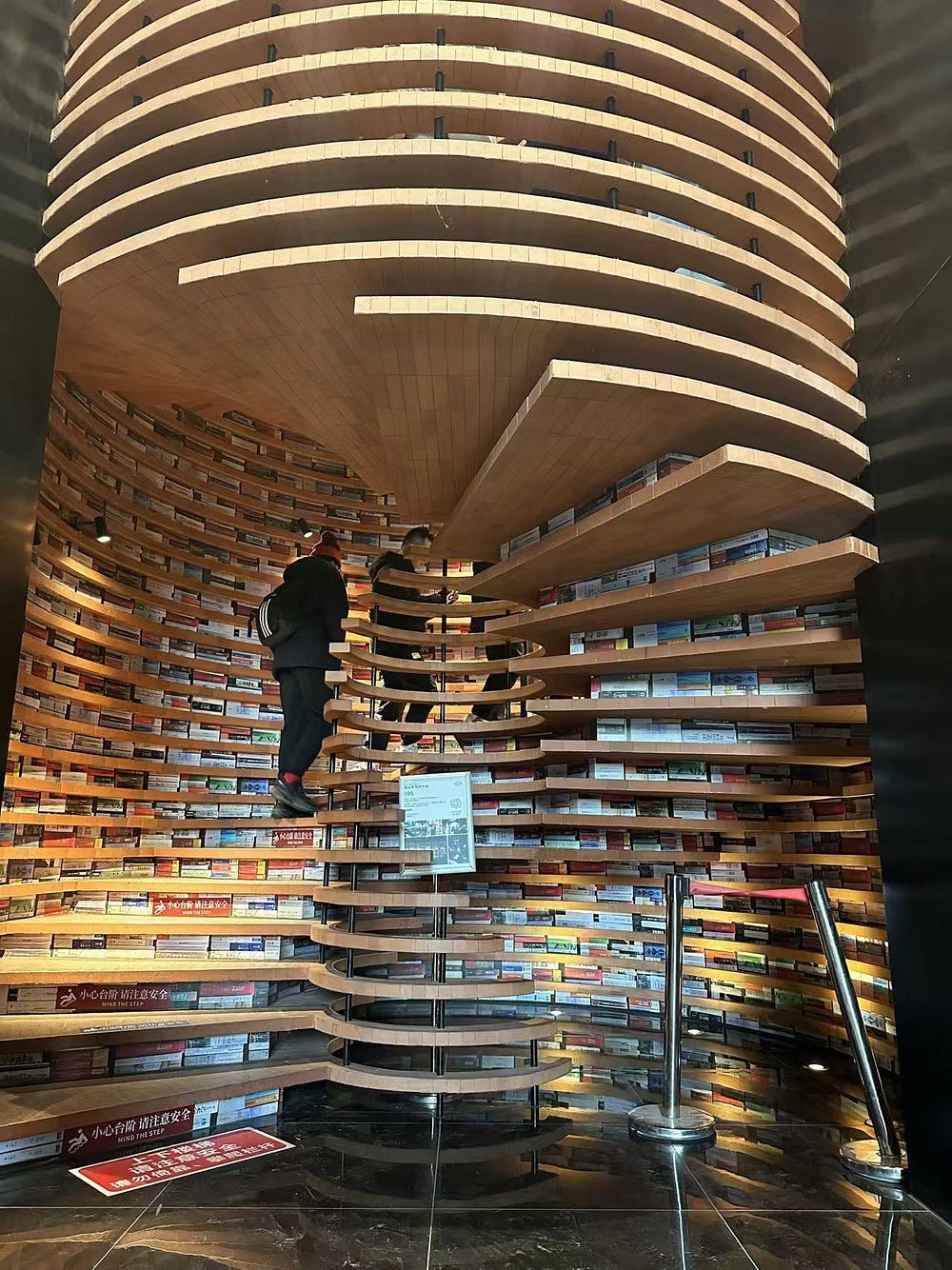
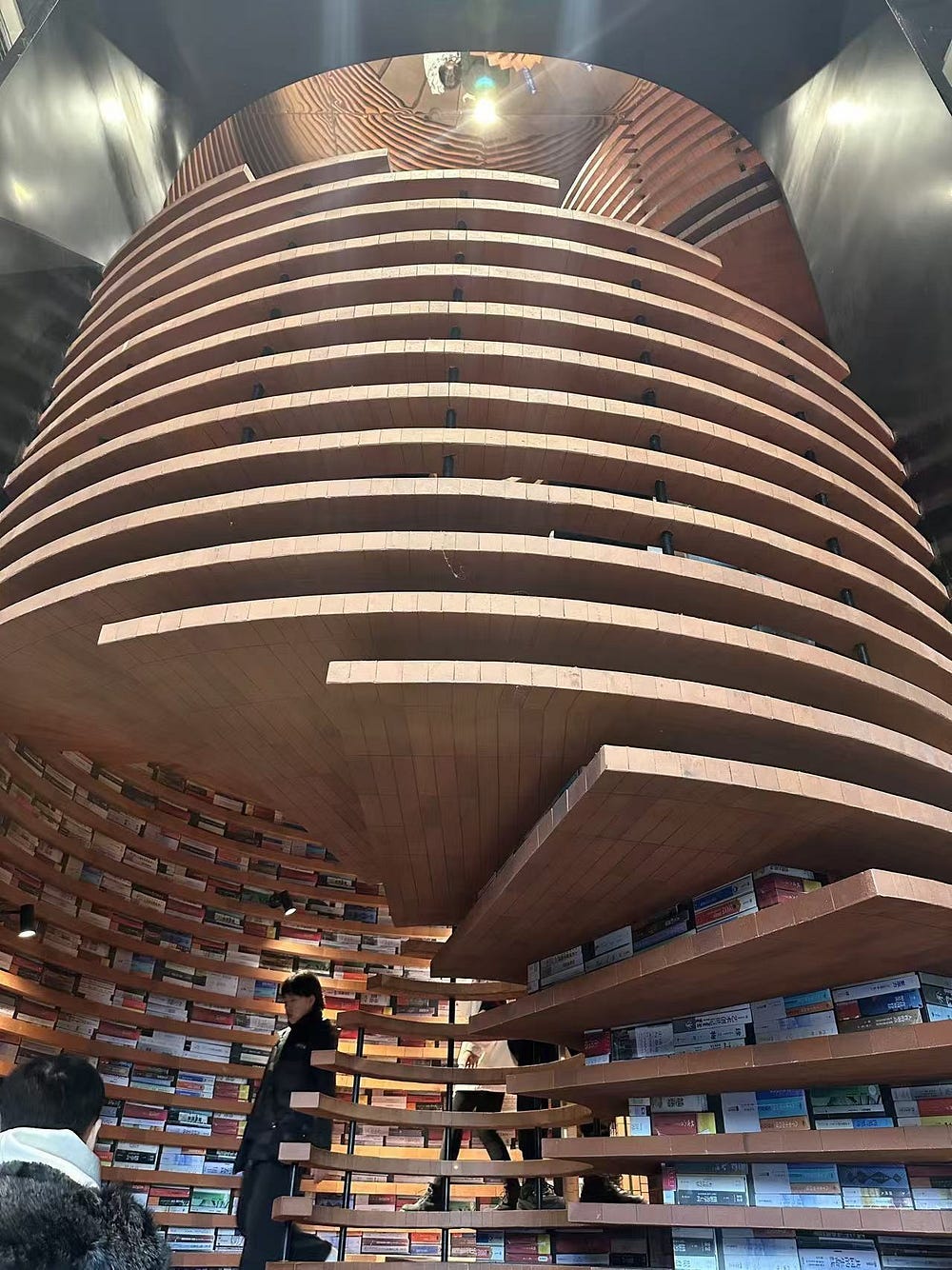
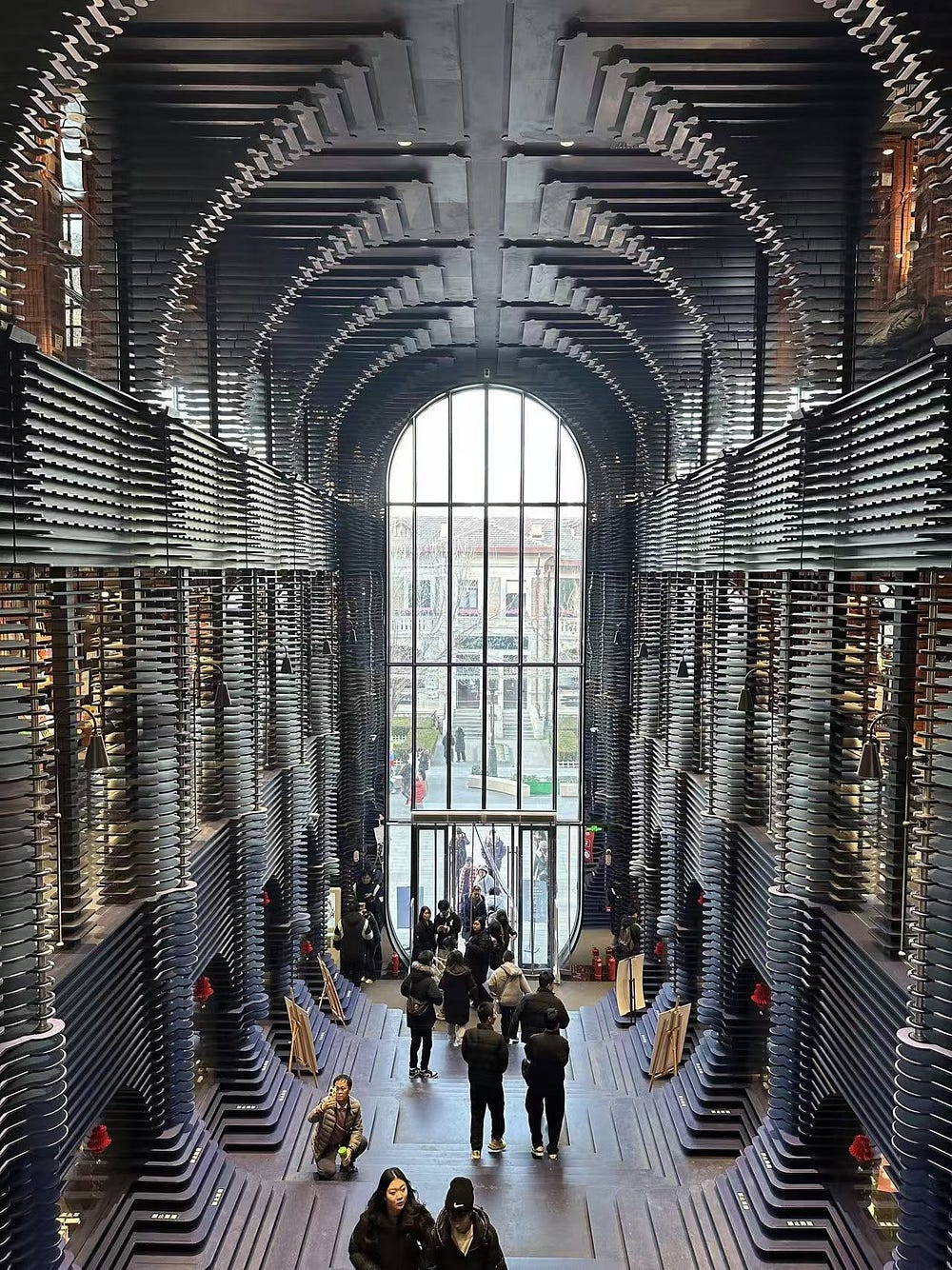

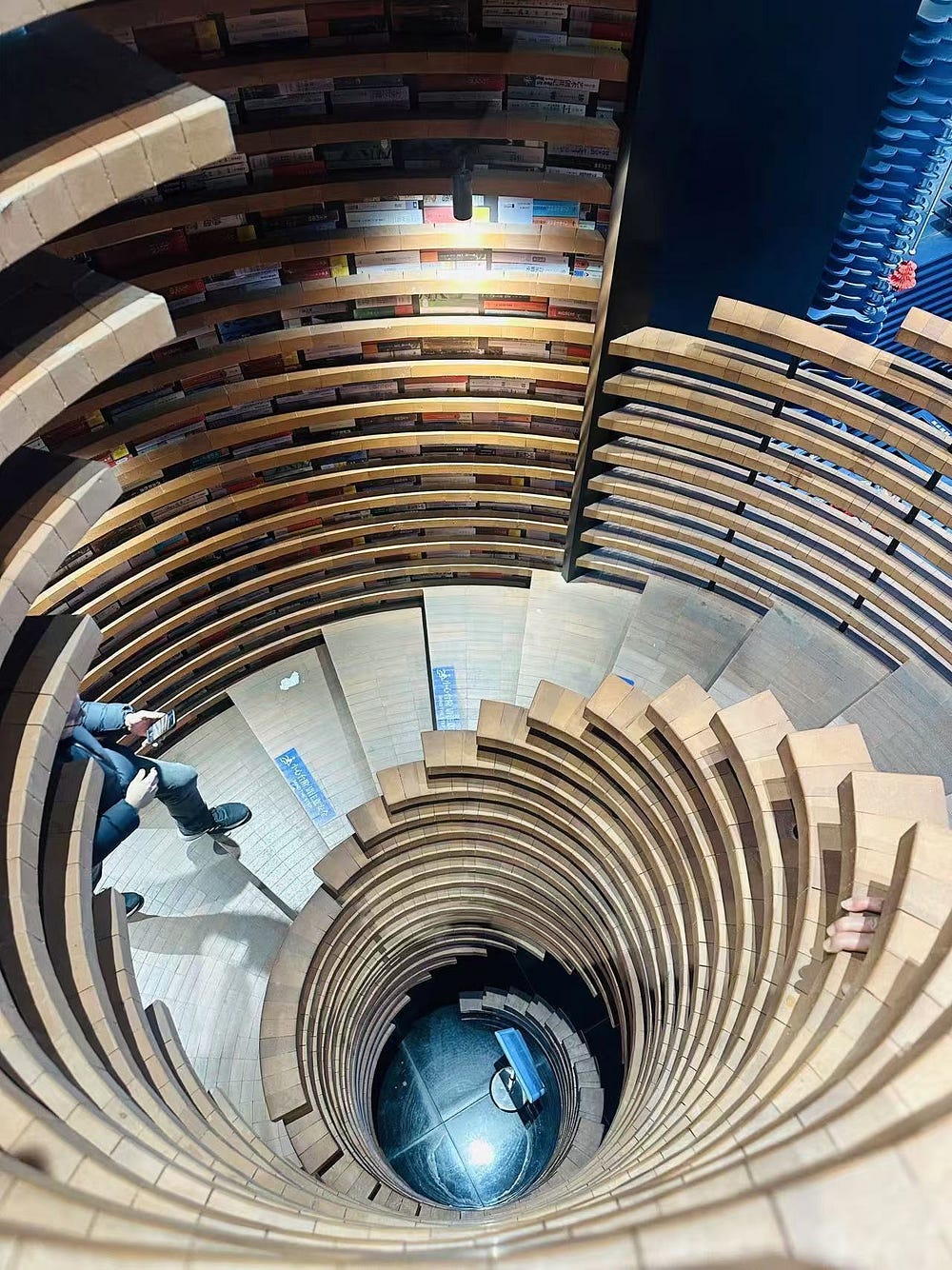



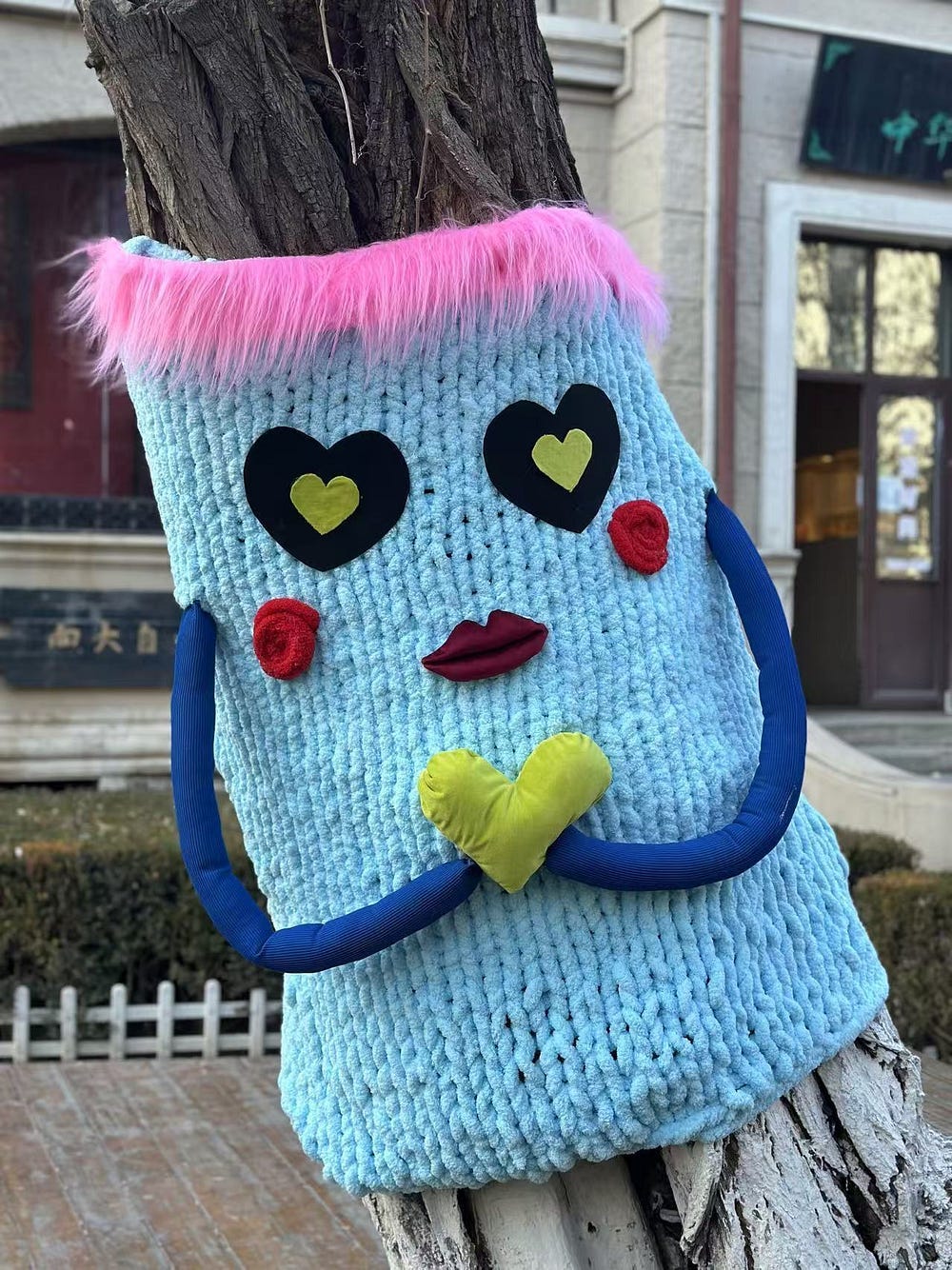
Modern Chinese architecture - and modern Chinese library architecture - never ceases to amaze me. Tianjin does not disappoint. and the building - so "modern Tianjin". Now to go over and check out the Sichuanese version!